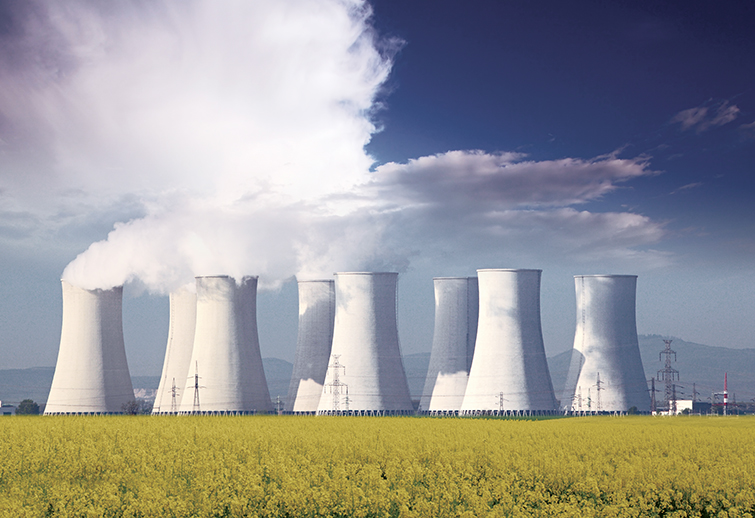Is It Too Late for Clean Gas?
- Caifu Magazine | by Alan Forsythe
- EN
The Malaysian state-run oil and gas giant, Petronas, had wanted to invest $11 billion USD in an LNG play on Canada’s west coast, and up to $36 billion CAD with upstream capital investments and later expansion.

Last fall the project was approved with conditions by the federal government. However by that point Petronas, who had aggressively pursued the large LNG project for years, including an offer of $1 billion CAD to an Indigenous tribe in British Columbia to secure their endorsement (which was refused), have cooled toward Canadian natural gas.
The project was approved last fall, but Petronas had been slow to move on the Pacific NorthWest LNG Project, citing a worldwide glut and depressed prices. Petronas then announced in July 2017 they will not pursue the Pacific NorthWest project for the foreseeable future. This is tantamount to a death knell for the project. A change in the B.C. provincial government, who stated they wished to do a further royalty review, may also have been one hoop too many for Petronas to jump through.
At the time of approval last year, Canadian Natural Resource Minister Jim Carr stated that approval of the project was not a green light for all energy projects. He needn’t have worried, as noted; a glut in LNG on the market has put projects worldwide on hold, or at least spurred producers to focus on projects in locales with lower initial capital costs and ongoing operating costs, namely Africa and Asian LNG plays. New projects in Australia and Russia have come on line, in the same timeline as Pacific NorthWest LNG Project gained approval to commence development.
What happened to Canadian west coast LNG? As reported in CAIFU in October 2015, the resource was hoped to be a bonanza for the province of British Columbia and Canada.
But out of 20 proposed projects brought to the table in the past decade, none have been realized or even broken ground.
One reason is the difficult regulatory burden Canada places on producers. Even in giving approval, it was based on 190 conditions.
“I am confident with the 190 legally binding and scientifically determined conditions that we will address the most important environmental impacts to ensure this project proceeds in the most sustainable manner possible,” said Environmental Minister Catherine McKenna at the time.
While certainly today energy producers know environmental costs must be factored into any project, Petronas may have been left scratching their heads at the caveat named in their approval, having already completed years of stringent environmental review.
Several years ago, Husky Energy (a subsidiary of C.K. Hutchinson Holdings) considered a Canadian east coast LNG play in the hopes of exploiting the European market in the face of unreliable Russian supply.
But that project also faced a steep regulatory burden. Instead, Husky Energy turned its attention to the Liwan gas project in the South China Sea.
Husky Energy has a 49 percent stake in the Liwan gas project, the first deepwater offshore energy project for China (300 kilometers southeast of Hong Kong) with operations commencing in 2014.
Husky Energy appointed Janet Annesley, former chief of staff to Minister Carr, to senior vice president of corporate operations in June 2017. She is expected to be a powerful lobbyist for Husky, and will likely help steer the Calgary-based company over many of the regulatory hurdles Canadian governments place in front of energy companies.
With holdings in the gas-rich Montney formation and other upstream assets, Husky would no doubt like to have become the feeder to at least one or two of the 20 LNG proposals for the B.C. coast.
While many in opposition to fossil fuel production perhaps cheer the slowdown of LNG development, the fact is only LNG is in a position as a realistic alternative to coal.
China and Europe would like to move away from coal, but also have intense energy needs. Natural gas burns at least five times cleaner than coal, according to former University of Victoria scientist Andrew Weaver, now the Green Party leader. Despite his own research, Weaver remains opposed to LNG.
Nonetheless, natural gas is abundant, and even its greatest detractors admit it is far cleaner than coal.
Just as with oil, Husky Energy, and other western Canadian producers need to find a way to bring their resource to the Asian market, or be forced to continue to sell into the United States, where demand for natural gas is expected to drop as President Donald Trump opens up exploration and development of domestic gas resources and coal production.
Former Canadian Prime Minister Stephen Harper stated early in his 10-year term of office that he wanted to make Canada into an energy superpower. At the time, with oil over $100 USD a barrel, the idea was hardly a pie in the sky.
But in 2017, with global energy markets becoming more competitive every day, simply having the good fortune to be living a top an abundant natural energy resource is not enough.
Australia, which has a smaller population than Canada and far less natural gas resources, has demonstrated being close to the lucrative Asian market is far more beneficial than abundance.
It remains to be seen if Canada can untie itself from the U.S. market at a time when the United States is increasingly relying on domestic oil and gas, and become a player on the world energy market.
However, time is not on Canada’s side.















